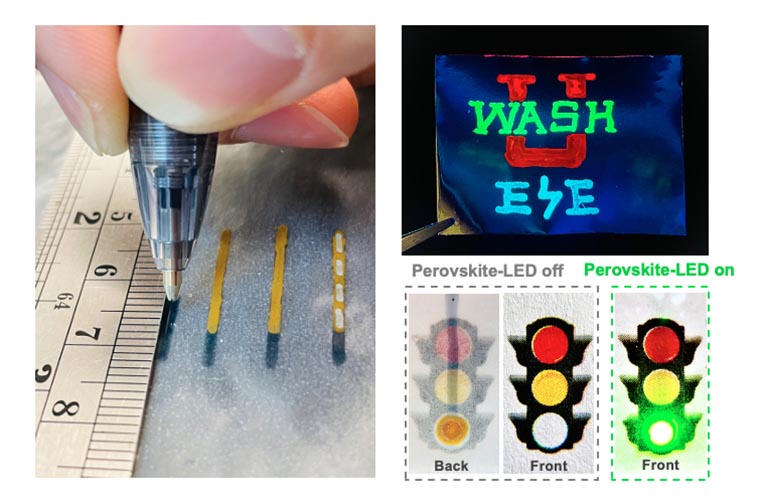
University R&D Team Develops Process To Write LED Displays With A Ballpoint Pen
August 15, 2023 by Dave Haynes
A university research lab that had already come up with a way to inkjet print LEDs has now figured out how to write them onto surfaces like paper and fabrics using a ballpoint pen.
The R&D comes out of the McKelvey School of Engineering at Washington University in St. Louis, MO, under a team led by Chuan Wang, an associate professor of electrical and systems engineering at the university.
From the university’s publication:
In a paper published Aug. 7 in Nature Photonics, the team reports their simple and versatile fabrication approach to allow anyone to make a custom light-emitting diode (LED) or photodetector without the need for any specialized training or bulky equipment. The new handheld fabrication technology builds on earlier work by Wang and first author Junyi Zhao, a doctoral candidate in Wang’s lab, in which they demonstrated a novel way to fabricate stretchable LEDs with an inkjet printer.
“Handwriting custom devices was a clear next step after the printer,” Wang said. “We had the inks already, so it was a natural transition to take the technology we had already developed and modify it to work in regular ballpoint pens where it could be cheap and accessible to all.”
The same team had published a paper back in Oct. 2021 about inkjet printing LEDs.
Inkjet fabrication saves materials, as the perovskite can be deposited only where it’s needed, in a similar way to the precision with which letters and numbers are printed on a piece of paper; no splatter, less waste. The process is much faster as well, cutting fabrication time from more than five hours to less than 25 minutes.
Another benefit of using the inkjet printing method has the potential to reshape the future of electronics: perovskite can be printed onto a variety of unconventional substrates, including those that wouldn’t lend themselves to stability while spinning — materials such as rubber.
“Imagine having a device that starts out the size of a cell phone but can be stretched to the size of a tablet,” Wang said.
This is, of course, R&D work, and not something that will be a commercial product quickly, if at all. But it’s very interesting and a little mind-wobbling. The idea isn’t really all that much out there, so to speak, as there are processes for manufacturing OLED displays using printing techniques.
While pro AV people naturally think about the display possibilities of, I dunno, LED wallpaper, the R&D people are talking in terms of simple applications like medical dressings that have LEDs paired with sensors to read things like the state of healing or risk of infection.



Leave a comment